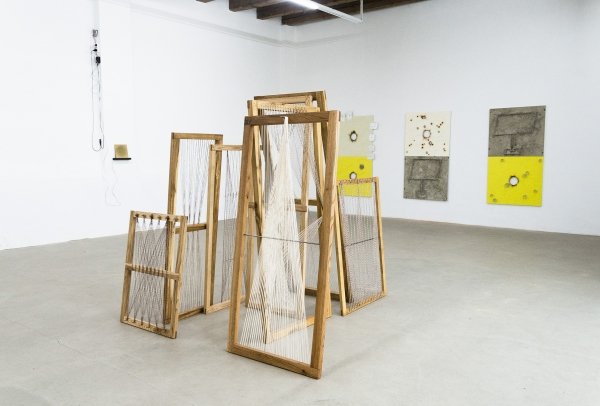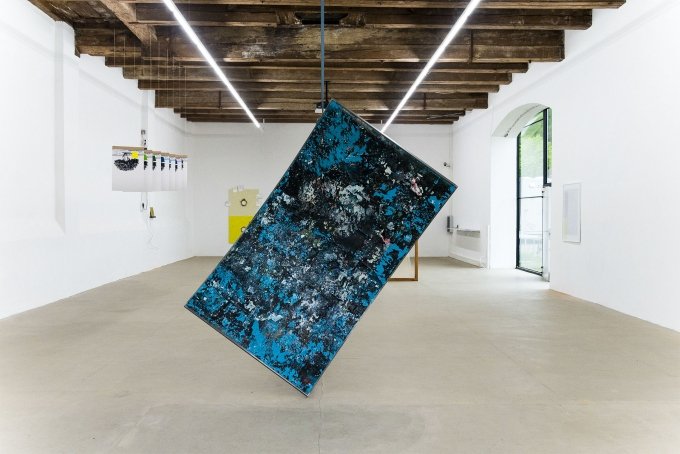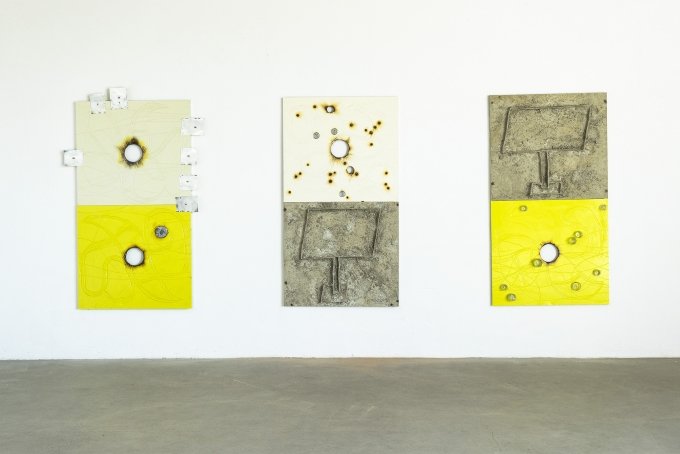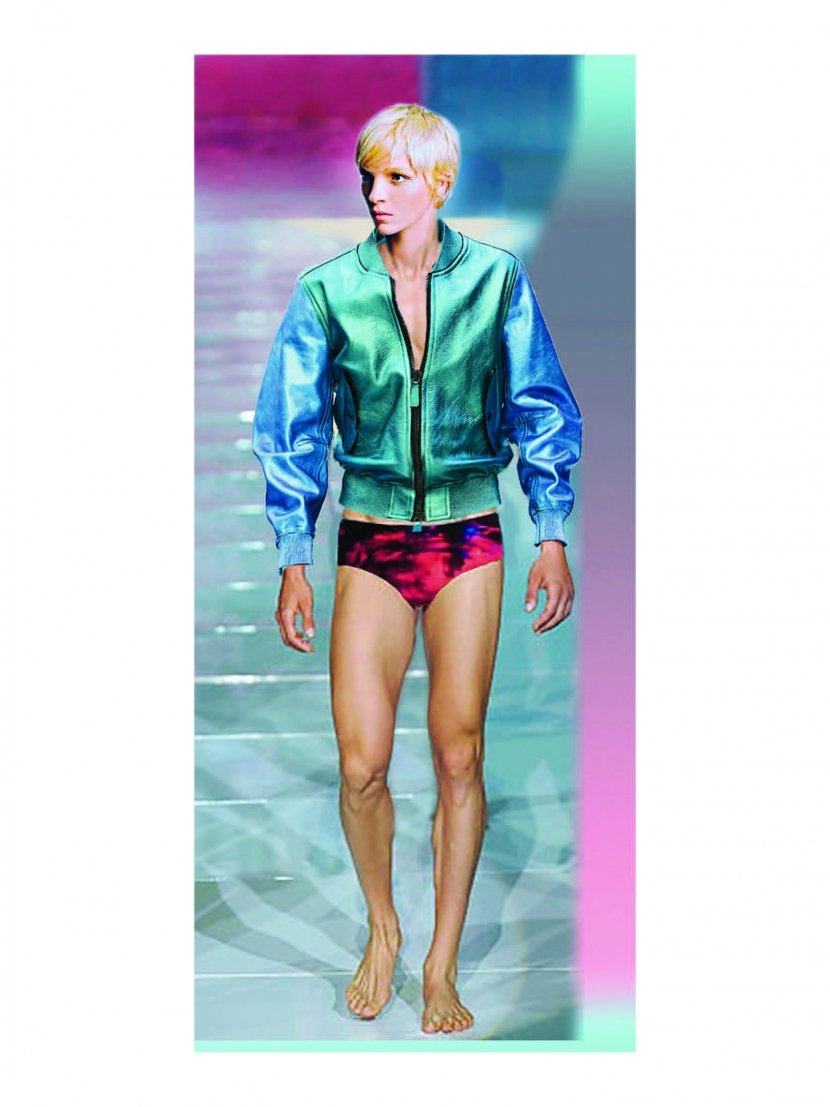non-binary bei KS Room, Feldbach
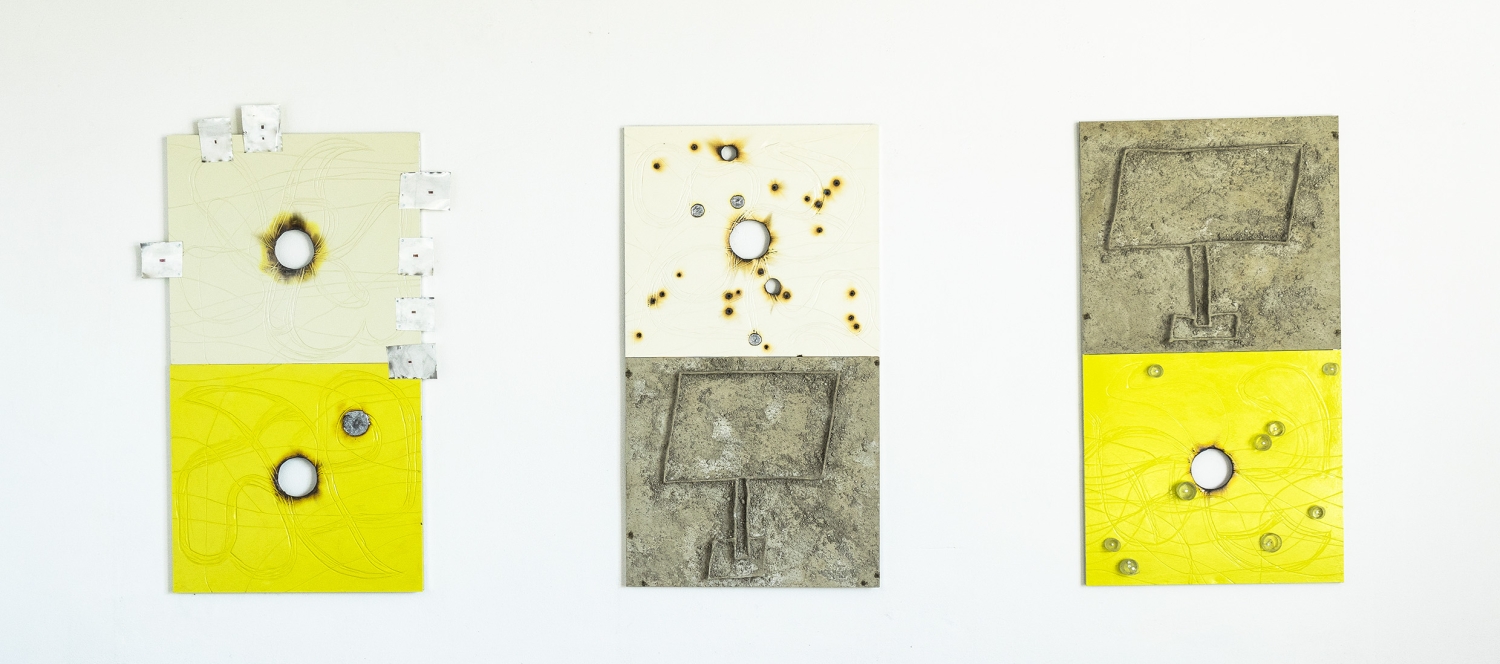
KS Room
Dörfl 1, 8330 Kornberg bei Riegersburg
Österreich
KünstlerIn: Lisa Caligagan, Julia Frank, Belinda Kazeem-Kamiński, James Lewis, Olga Micińska, PPKK (schoenfeld & scoufaras), Signe Rose, Amy Stephens
Titel: non-binary
Datum: 22. April - 19. Mai 2019
Fotografie: Courtesy the artists, Victoria Dejaco and KS Room | Foto: Barbara Riegler
Notiz: Kuratiert von Victoria Dejaco
Ausstellungstext:
„...objects are deeper than any of the relations they have to human beings“ (1) says Graham Harman in his recount of a talk he gave during the Goldsmith workshop in 2007 explaining the concept of Object-Oriented-Ontology. “...’praxis does not get at the reality of the object any more than theory does […] by staring at this chair I don’t exhaust its being, but by sitting in it I also don’t exhaust it. There are so many deep layers to the reality of that chair that the human act of sitting is never going to exhaust’. [Graham quoting himself] In other words, theory and praxis both live on the same side of the fence: the side of the surface of things, which doesn’t do justice to the depth of their reality.” (2)
The exhibition title “non-binary” means not assignable to two poles, not black and white, not binary like computer language, the code made of zeros and ones or the traditional separation of humankind in male and female. In this exhibition “non-binary” is referencing two contexts.
In a first instance it challenges the relationship between the (art) object and the maker or viewer conceived as inherently and necessarily binary meaning that objects are defined by their relationship to the human subject.
„Today, the „post human“ has invaded aesthetic debate. The emergence of speculative realism and of object-oriented thought, as well as the recent revival of animism, has created an intellectual climate where the object holds our attention. […] to its credit, this new theoretical framework contributes to the uncoupling of the conceptual duo on which all Western aesthetics is based: the link between subject and object, between human consciousness and the exterior world; aesthesis, or sensation, would not exist without the participation of the human subject. But the question arises, is it possible to envision an aesthetic (in the wider sense of „style“, perhaps) that does not have the human mind at is center?” (3) In the deconstruction of the object/subject binary “[…] beings and objects are no longer two distinct realms. The world is perceived as an alliance, a composite, a huge assembly line, and contemporary art encompasses both animism and the process of reification, both subjectivity and product. Human beings now see themselves as radically relativized to such a degree that the word anthropomorphic could be extended to signify anything with DNA.“ (4)
James Lewis presents works in resin, wood, clay and lead. Lead has the highest atomic number/ density of any stable element. It is a toxic heavy metal that chemically reacts with bases and acids but also has a low melting point and is easily malleable. James’ objects seem to come from a cryptic post-apocalyptic future and could have easily been shaped by non-human forces. Amy Stephens’ works combine nature’s organic presence with its scientific laws in the joining of relic, geometric form and representation.
“Some time ago a proposal was made to distinguish between heterotechnics and homeotechnics (Sloterdijk, Not saved. Experiments according to Heidegger, Frankfurt am Main, 2001, p. 212 f.) - the first being based on procedures of nature rape and nature deception, the second on procedures of nature imitation and the continuation of natural production principles on an artificial level. By converting the technosphere to homeotechnical and biomimetic standards, a completely different picture of the interaction between environment and technology would emerge over time. We would experience what the earth can do as soon as people switch from exploitation to co-production. On the path of mere exploitation, the earth remains the limited monad for all time. On the path of co-production between nature and technology, it could become a hybrid planet on which more will be possible than conservative geologists believe.” (5)
The technique developed by Julia Frank is heavily depending on her own body engaging with the material however is majorly influenced by numerous chance factors like room temperature and humidity. Plastic is one of the biggest environmental problems haunting the 21st century. It surrounds us everywhere. Invisible to the eye, particles of micro plastic are also in our food, our beauty products and our clothes. Since plastic is not biodegradable it will turn into sedimentary strata on earth like all previous sediments of the history of our planet. The artist works with micro plastic particles, applied in many layers with gas pressure onto a synthetic skin where chemical reactions happen under the pressure of body weight. This performative creation process stands in the tradition of the involvement of the body in feminist art. (6)
Similarly Olga Micińska is playing with the feminist history of domestic practices in art making. She shows big freestanding sculptures that remind us of weaving looms, however she sees them as ambivalent tools, devoid of their function, already showing a finished pattern in the warp and oscillating between the female connoted weaving and the male connoted woodworking. The Jacard loom was the first machine using a binary code, like the one, computers are using still.
The second context the exhibition title is touching on is “non-binary” as opposed to the binary roles of male and female and as the buzzword in social discourse, politics and media. Conversations are sparked in a collective effort to promote a more open approach to gender identity that could benefit the mental health of all individuals and help humanity develop in a direction of inclusion, understanding and empathy instead of separation, extremism and aggression.
Progressive forces in Hollywood and activist communities everywhere in the world, aim at more inclusivity in matters of race, sexual orientation or body type. Netflix has influenced this development like no other broadcaster before by producing shows like Shrill (body positive), Sex Education (LGBTQ-inclusive), Dear White People (challenging racial stereotypes), Grace and Frankie (against ageism), A-Typical (ableism) or How to get away with murder (powerful and multi-faceted characters of color) and many more. Apart from gender and orientation even the biological sex itself is not a binary matter. There are seven characteristics of biological sex. Besides genitalia, we have chromosomes, gonads (testicles or ovaries), internal sex organs, hormone production, hormone response and secondary sex characteristics like breasts and body hair. All of those factors can vary and act in contradiction to one another. Acting like gender is a matter of either male or female is toxic and has violent consquences. Intersex people for example make up 2% of the population (approx. 150 Mio.) and most intersex children are operated on, their genitalia mutilated without their consent, at times without their knowledge and often the procedures are never revealed to them. Binary ideas about gender, race, religion or any other topic of humanity are blocking tolerance, understanding, equality and empathy.
For their work 02.00 PPKK (schoenfeld and scoufaras) unearthed material from an LGBTQ archive in Berlin showing a painful history that came a long way. Signe Rose and Lisa Caligagan have visual counter offers to our binary perception of gender: Lisa in her variations of “stick figures” made out of a selection of geometrical elements and Signe in her collages of androgynous bodies that she generated when she was about to loose her own androgynous body to the intensely female experience of pregnancy.
Four pregnant women have been involved in the “non-binary”-exhibition which bears witness to another cultural shift many woman are actively working towards. The assumption that women are either producing or procreating and that one cannot be an active part of productive society when caring for offspring, which is a rather new idea because female farmers and queens everywhere have always done both and shared tasks of either responsibility with other women of the community. We are hence also counter-acting the binary of who is a productive member of society and who isn’t.
“This ‘sovereign’ - meaning top-weapons enforced - ‘national’ claim upon humans born in various lands leads to ever more severely specialized servitude and highly personalized identity classification. As a consequence the slavish ‘categoryitis’[sic], the scientifically illogical, and as we shall see, often meaningless questions “Where do you live?” ‘What are you?” “What religion?” “What race?” “What nationality?” are all thought of today as logical questions. By the twenty-first century it either will have become evident to humanity that these questions are absurd and anti-evolutionary or men will no longer be living on Earth.” (7)
One should be easily able to imagine, that a more inclusive world on all levels could lead to a better coexistence of objects and humans on this planet. Belinda Kazeem Kamiński’s practice actively intervenes and questions seemingly self-evident processes and contexts to uncover colonial patterns desperately in need of reshaping for more inclusive, intercontinental, respectful interactions. Her two-part work, Angelo Soliman, (ante mortem) I and (post mortem) II (2015), is part of the series “exhibited/in remembrance”, in which the artist examines the 18th and 19th century practice of exhibiting black people in museums. Angelo Soliman was abducted, enslaved and forced to serve at the Viennese Court. After his death, his body was flayed, stuffed and exhibited at the Hofnaturalienkabinett. Belinda reflects on representation in museums generating racist stereotypes.
For a next step in evolution, humanity won’t only need a different relationship between the sexes, the object and the subject, humans and nature, but also the human subject to the entirety of its surrounding moving away from exploitation towards new ways of coexistence and exchange. The artists in the exhibition “non-binary” propose various approaches of those different aspects of new strategies of involvement with each other and the world around us.
- Victoria Dejaco
1 Graham Harman, Speculative Realism, Polity Press. Cambridge, 2018, p. 94. 2 Ibd., p. 93.
3 Nicolas Bourriaud in „Art as Virus“, Parkett 96, 2015, p. 76/77.
4 Ibd.
5 Various Authors, Das Raumschiff Erde hat keinen Notausgang, Berlin 2011, p. 109. Translated with www.DeepL.com/Translator
6 Feminism at its best is the practice of acknowledging the existence of different realities and trying to make space for every individual‘s human rights. A political practice of feminism could lead the way to a better coexistence.
7 Buckminster Fuller, Spaceship Earth, 1969, p. 31.

